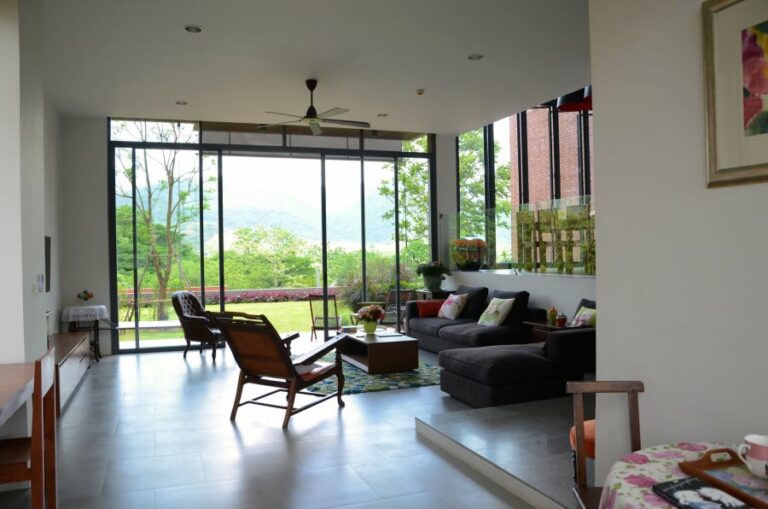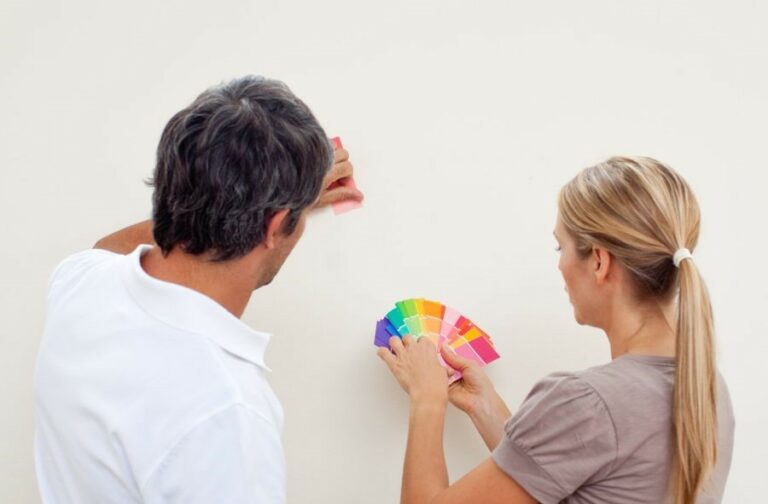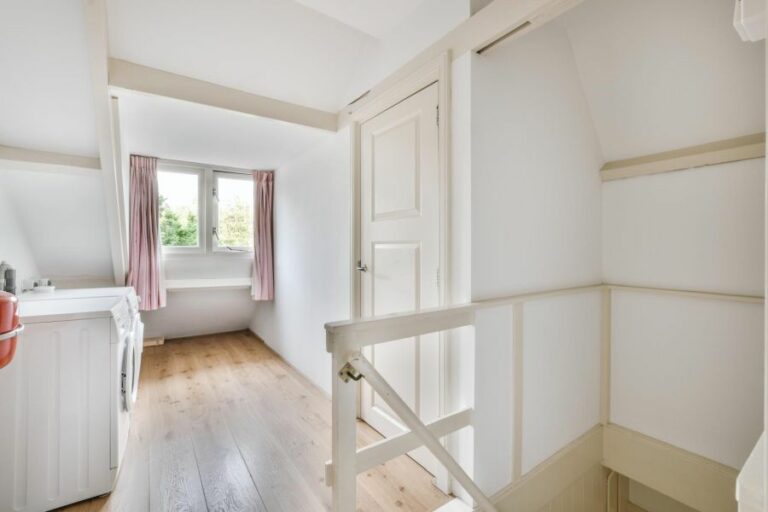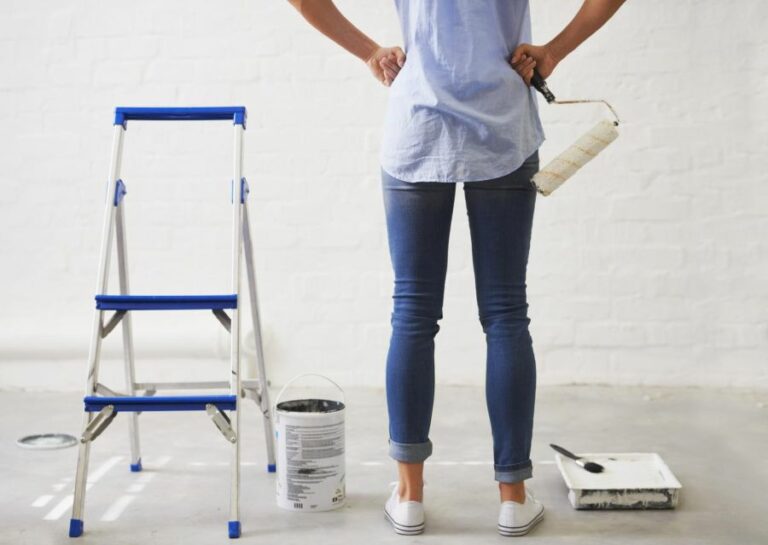Metallic Indoor Paint Options, 25 Things You Should Know
Looking to give your interior space a fresh new look with some bold and unique paint choices? Look no further, as metallic indoor paint options are the perfect solution to add a touch of glamour and sophistication to any room. With an array of stunning colors and finishes available, we have all the information you’ll need to confidently transform your space with this modern and elegant style.
Metallic indoor paint options:
Metallic indoor paint options include pearl paint, allover metallic paint, and metallic accents, offering enhanced visual appeal, versatility, and durability to interior spaces. Top brands for high-quality metallic paint include Modern Masters, Rust-Oleum, and Farrow & Ball. To achieve the best results, prepare surfaces well, utilize suitable primers and tools, and apply multiple coats.

Discover the elegance and durability of metallic indoor paint options for a sophisticated touch to your living space. Read on to learn about various types, application techniques, and design inspirations to transform your home into a stunning masterpiece.
Contents
- 1 Options for Metallic Interior Paint
- 2 Evaluating Metallic Wall Paint Aesthetics
- 3 Guide to Applying Metallic Paint on Interior Walls
- 4 Drawbacks of Using Metallic Paint for Walls
- 5 Exploring Various Metallic Paint Varieties
Options for Metallic Interior Paint
• Elevate Your Interior Design
If you’re looking to add a touch of elegance and sophistication to your home, metallic indoor paint is an excellent option. With a variety of finishes and shades, these paints provide a stunning effect that instantly elevates your space.
• Benefits of Metallic Indoor Paint
– Enhanced Visual Appeal
Metallic paints provide a luxurious, distinctive appearance that can’t be achieved with standard paint finishes. The shimmering effect catches the eye and adds depth and texture to walls, ceilings, and other surfaces.
– Versatility
The wide range of available metallic paint shades allows for excellent versatility in interior design. From more subtle shades like champagne and nickel to bolder options like gold and copper, you’ll find the perfect hue to complement your decor.
– Durability
Quality metallic paints are known for their durability, ensuring your beautifully painted surfaces stand the test of time. Be sure to choose a reputable brand to get the most out of your investment.
• Metallic Paint Types
– Pearl Paint
Pearl paints feature a subtle iridescence that adds a soft glow to surfaces. They’re ideal for creating a luxurious, understated look in rooms like bedrooms, bathrooms, and living areas.
– Allover Metallic Paint
This type of metallic paint provides a smooth, even coverage on surfaces, giving a uniform shimmering effect. It’s excellent for larger areas and rooms where you want a continuous metallic finish.
– Metallic Accents
If you prefer not to paint an entire room or wall metallic, you can opt for metallic accents instead. Use metallic paint on moldings, trim, or other decorative features to add a touch of glamour without overwhelming the space.
• Application Tips for Metallic Indoor Paint
– Proper Preparation
Ensure surfaces to be painted are clean and free from dust, dirt, and grease. Fill any holes, cracks, or imperfections with a suitable filler and sand smoothly.
– Use a Quality Primer
A high-quality primer is essential for a smooth and even metallic finish. Choose a primer that’s appropriate for your wall material and follow the manufacturer’s instructions for the best results.
– Select the Right Tools
For a seamless finish, use high-quality paintbrushes or rollers specifically designed for metallic paint application. If you’re experienced with a paint sprayer, this can also provide a professional finish.
– Apply Multiple Coats
Achieving the perfect metallic finish often requires multiple coats of paint. Be patient and allow each coat to dry thoroughly before applying the next one. This will ensure the best possible result.
– Finish with a Sealer (Optional)
For added durability and protection, you can apply a clear sealer or topcoat after your final metallic paint coat. This is especially helpful in high-traffic areas or rooms with variable humidity, such as bathrooms and kitchens.
• Top Brands for Metallic Indoor Paint
Here are a few reputable brands known for producing high-quality metallic indoor paint:
– Modern Masters
Modern Masters offers an extensive range of metallic paints in various shades and finishes. Their product line includes options for allover coverage, accents, and even pearlescent finishes. I highly recommend the Modern Masters Metallic Paint Collection for its excellent quality and performance.
– Rust-Oleum
Rust-Oleum’s metallic paint options include allover coverage and accents. Their Metallic Paint Accents line provides a durable, shimmering finish in various shades.
– Farrow & Ball
Farrow & Ball, a high-end paint company, offers a selection of luxurious metallic paint finishes in their Estate Emulsion and Modern Emulsion ranges. These paints are known for their outstanding quality and rich, deep colors.
• Conclusion
Metallic indoor paint can truly transform your home, adding elegance and sophistication to any space. With a variety of types, finishes, and shades available, you’re sure to find the perfect metallic paint to suit your unique style.
Remember to prepare surfaces well, choose the right tools, and apply multiple coats to achieve a stunning metallic finish that lasts for years to come. Happy painting!
Evaluating Metallic Wall Paint Aesthetics
Metallic paint is a versatile and striking choice that can instantly elevate the aesthetic of any space.
• What is Metallic Paint?
Metallic paint is characterized by its reflective properties achieved by the addition of small metallic particles, typically made of mica, copper, aluminum, or bronze. These particles give the paint a shimmering, light-reflective finish, which can add elegance, depth, and a touch of glamour to any room.
• Pros
– Enhances Visual Interest and Depth
One of the biggest benefits of metallic paint is its ability to create visual interest and depth in a space. The reflective nature of metallic paint allows light to bounce off the surface, enhancing the room’s overall brightness and creating a 3D effect. This effect can generate a rich and luxurious atmosphere that traditional matte or semi-gloss paint cannot achieve.
– Versatility
Metallic paint can complement various design styles, from modern and contemporary to traditional and eclectic. It can also be applied in various ways, including full-wall coverage, accent walls, or even stenciling, allowing you to personalize your space in a unique manner.
– Conceals Imperfections
Thanks to its luminous quality, metallic paint can effectively mask wall imperfections such as dents, cracks, and uneven textures. The reflected light creates a subtle camouflage, drawing attention away from the wall’s flaws and emphasizing the paint’s eye-catching shimmer.
• Cons
– Difficult Application Process
Applying metallic paint can be a challenging process for inexperienced painters. It often requires multiple coats for full coverage, as well as specific techniques like crosshatching to ensure a smooth, even finish.
Additionally, the reflective nature of the paint can make it difficult to touch up spots without leaving visible brush or roller marks, which can be frustrating for DIYers.
– Cost
Compared to traditional paints, metallic paints are generally more expensive. The unique advantages mentioned above can justify the additional cost, but budget-conscious homeowners may find it a considerable factor.
– Durability
While metallic paint is generally durable, it can be prone to chipping or peeling over time, especially in high-traffic areas. This could result in the need for more frequent touch-ups or repainting, adding to the long-term cost of maintaining the finish.
• Tips for Incorporating Metallic Paint into Your Space
– Consider the Space and Lighting
When deciding to use metallic paint, it’s essential to assess the room’s size, purpose, and lighting conditions. Metallic paint works best in well-lit areas where natural or artificial light can enhance its reflective qualities.
Smaller spaces may benefit from using metallic paint on an accent wall or with specific design elements rather than full-wall coverage to avoid overwhelming the room.
– Choose the Right Color and Finish
Metallic paint is available in various colors and finishes, allowing you to select an option that best complements your space and design goals. For a subtle sheen, opt for a paint with fine metallic particles. For a more dramatic finish, choose a paint with larger, more prominent particles.
– Work with a Professional Painter
Considering the complexity of applying metallic paint, it may be a worthwhile investment to hire an experienced professional painter who is familiar with the proper techniques to ensure a flawless finish.
• Final Thoughts
Metallic paint can be a stunning addition to any room, but it’s essential to weigh pros and cons while taking your space and personal preferences into account.
When executed correctly, metallic paint can enhance your room’s depth, visual interest, and overall atmosphere, making it a worthwhile consideration for any homeowner.
Guide to Applying Metallic Paint on Interior Walls
Metallic paint can add a touch of luxury and sophistication to your interior walls, elevating the look of your space.
• Prepare Your Walls for Painting
Before starting the painting process, you need to ensure that your walls are clean and smooth.
– Clean the Walls
Remove any dirt, dust, and grease from the walls with a sponge and mild soapy water. Allow the walls to dry completely before proceeding.
– Repair Damaged Areas
Inspect your walls for any damage, such as cracks, holes, or dents. Use a putty knife to fill these areas with spackling compound, and allow it to dry as per the manufacturer’s instructions. After it has dried, sand the repaired areas smoothly.
– Apply Primer
Priming your walls is essential for a smooth and even finish. Choose a primer that is compatible with metallic paint, and apply it to your walls following the manufacturer’s instructions. Allow the primer to dry completely.
• Choose the Right Metallic Paint
Selecting the right metallic paint is crucial in achieving your desired look. Metallic paint comes in various finishes, including gold, silver, bronze, and copper. When choosing your paint, consider the following factors:
- Color: Select a color that complements your existing decor and reflects your personal style
- Brand: Opt for a high-quality brand to ensure a durable and professional-looking finish
- Sheen Level: Choose the level of sheen based on your preference, keeping in mind that higher sheen levels give a more reflective finish
To make an informed decision, it’s recommended to test a small paint sample on your wall before committing to a specific color and brand.
• Gather Necessary Painting Supplies
Having the proper tools and materials will ensure a smooth painting process. Here are the essential items you will need:
- High-quality paint roller designed for metallic paint
- Paint tray
- Painter’s tape
- Drop cloths or plastic sheeting
- Ladder or step stool (if necessary)
- Small paintbrush for detail work and edges
- A clean, damp cloth for wiping away any mistakes
• Apply the Metallic Paint
Once your walls are prepared and you have all the necessary supplies, it’s time to apply the metallic paint. Follow these steps for a seamless finish:
– Apply Painter’s Tape and Protect Floors
Use painter’s tape to mask off any areas you do not want to paint, such as baseboards, trim, and electrical outlets. Lay drop cloths or plastic sheeting on the floor to protect it from paint splatters.
– Begin Painting
Dip your paint roller into the paint tray, ensuring it is well-coated but not dripping. Use the roller to apply the metallic paint to the walls in a crisscross pattern, starting from one corner and working your way across the surface. Be sure to maintain a wet edge to avoid lap marks.
– Apply Multiple Coats
Metallic paint typically requires multiple coats for full coverage and an even shimmer. Allow the first coat to dry completely, as per the manufacturer’s instructions, before applying additional coats. Two to three coats usually result in the best outcome.
Remember to use a clean, damp cloth to wipe away any mistakes immediately.
– Tackle Trim and Edges
Once you have completed painting the main wall surfaces with the roller, use a small paintbrush to carefully paint edges and trim. Take your time to avoid any mistakes or uneven coverage.
– Remove Painter’s Tape and Clean Up
After the final coat has dried, carefully remove the painter’s tape, taking care not to damage the fresh paint. Clean your painting equipment and store it for future use. Dispose of the used drop cloths or plastic sheeting.
• Care and Maintenance of Metallic Painted Walls
Proper care and maintenance of your newly painted walls will ensure they continue to look stunning for years to come. Here are a few tips:
- Dust the walls regularly with a soft, non-abrasive cloth or a vacuum with a soft brush attachment
- Avoid using harsh chemicals or abrasive cleaners on the metallic paint, as they can damage the finish
- Touch up any damaged areas promptly to maintain the wall’s appearance
In conclusion, painting your interior walls with metallic paint can result in a luxurious and sophisticated look that sets your space apart. By following the steps and recommendations provided in this comprehensive guide, you can transform your walls with a stunning metallic finish.
For additional information on painting techniques and best practices, consider visiting The Painting and Decorating Contractors of America website.
Step | Instructions |
|---|---|
1 | Choose a metallic paint and gather the necessary materials, such as a paint roller, paint tray, painter’s tape, and brushes. |
2 | Prepare the surface by cleaning the walls, repairing any holes, and applying a primer if necessary. Allow the primer to dry completely before applying metallic paint. |
3 | Use painter’s tape to mask off areas, such as window and door trim, to protect them from paint. |
4 | Apply the first coat of metallic paint using a roller or brush, starting at the top of the wall and working your way down. Be sure to follow the manufacturer’s instructions for proper application and drying time. |
5 | Allow the first coat to dry completely, and then assess whether a second coat is needed to achieve the desired finish. If necessary, apply a second coat of paint using the same method as before. |
6 | Once the paint is fully dry, carefully remove the painter’s tape and any protective materials from the area. |
Drawbacks of Using Metallic Paint for Walls
Metallic paint, also known as metal flake paint, is a popular choice for many car buyers due to its attractive, eye-catching finish. Despite its aesthetic appeal, this type of paint also has a number of drawbacks that should be considered before making a decision.
• Higher Cost
One significant disadvantage of metallic paint is its higher cost compared to standard solid paint options. The addition of metallic flakes in the paint requires additional production steps and materials, which can result in a higher price for the finished product.
In some cases, choosing a metallic paint finish can add hundreds or even thousands of dollars to the total cost of a vehicle.
• Difficulty in Repairs
Due to the unique characteristics of metallic paint, repairing any damage to the vehicle’s exterior can be more complicated than with standard paints.
The metallic flakes in the paint can create challenges in achieving a perfect color match, as the flakes’ size, shape, and distribution must be precisely replicated to avoid any visible difference between the repaired area and the rest of the car.
Additionally, when repairing a small area of a metallic paint finish, it can be difficult to blend the new paint with the existing finish, which may result in a noticeable difference in appearance. This can lead to the need for a larger area to be repainted, further increasing repair costs.
For more information on the challenges of repairing metallic paint, check out this article from Collision Hub.
• Effect on Resale Value
While metallic paint may make a vehicle more attractive to potential buyers, it’s important to consider the impact that it could have on resale value. As mentioned earlier, metallic paint is typically more costly than standard paint finishes, and this added cost is not always recouped when selling the vehicle.
In some cases, buyers may prefer a less expensive, solid paint finish and might be unwilling to pay a premium for a vehicle with metallic paint.
Furthermore, the aforementioned challenges in repairing metallic paint can also affect resale value. If a prospective buyer notices inconsistencies or imperfections in a metallic paint job due to prior repairs, this could lead to a lower resale price.
• Increased Susceptibility to Scratches and Swirl Marks
Metallic paint finishes are known to show scratches and swirl marks more easily than solid paint finishes. The metallic flakes can make these imperfections more visible due to the way they reflect light, making the vehicle appear less well-kept.
To maintain the appearance of a metallic paint finish, owners should take extra care when washing and detailing their vehicles, as improper techniques can cause scratches and swirl marks. Regularly waxing a vehicle with metallic paint can also help protect the finish from damage.
• Limited Color Options
While metallic paint can offer an eye-catching look, the color options available may be more limited than with solid paint finishes. Some manufacturers only offer metallic paint in certain shades or may charge a premium for custom metallic paint colors.
This may be a disadvantage for those who prefer a wider range of color choices for their vehicle.
• Conclusion
While there are certainly disadvantages to consider, choosing a metallic paint finish can still be a worthwhile investment for those who prioritize aesthetics and are willing to put in the extra time and effort to maintain their vehicle’s appearance. However, for those who prioritize cost savings and simpler repairs, a standard solid paint finish may be a more practical choice. It’s essential to carefully weigh the pros and cons of metallic paint when making a decision, keeping in mind both initial costs and potential long-term consequences.
| Using Metallic Paint for Walls Disadvantages |
|---|
| More expensive than solid paint |
| Difficult to match during repairs |
| Scratches and chips are more noticeable |
| Can show swirl marks more easily |
| Requires regular maintenance for a good finish |
Exploring Various Metallic Paint Varieties
Metallic paint, also known as metal flake paint, is a type of paint that contains small, reflective metal particles, giving the painted surface a shiny, metallic appearance.
These paints are commonly used in the automotive, architectural, and product design industries, and they offer a variety of impressive visual effects.
• Acrylic Metallic Paint
Acrylic metallic paint is a water-based paint that uses acrylic resin as the binding agent. This type of paint is known for its durability, fast-drying properties, and resistance to ultraviolet (UV) light.
Acrylic metallic paints are available in a wide range of colors and can be applied to various surfaces, including metal, plastic, and wood.
Pros:
- Easy to apply and clean up
- Quick-drying
- Resistant to UV light and damage from sun exposure
- Low odor
- Non-toxic and environmentally friendly
Cons:
- May not be as durable as other types of metallic paint, such as epoxy or urethane
- Not suitable for high-heat applications
When using acrylic metallic paint, it is essential to apply the paint using appropriate techniques to ensure a smooth, even finish. For best results, use a high-quality brush, roller, or sprayer, and apply the paint in thin, even coats.
• Epoxy Metallic Paint
Epoxy metallic paint is a two-component paint system that consists of a resin and a hardener. When mixed together, they form a highly durable and weather-resistant finish suitable for metal, concrete, and other surfaces.
Pros:
- Extremely durable and long-lasting
- Highly resistant to chemicals, abrasion, and impact
- Excellent adhesion to various surfaces
- Can be used in high-heat applications
Cons:
- Takes longer to dry than acrylic metallic paint
- Requires proper mixing of the two components
- Can be difficult to clean up
Epoxy metallic paints are popular in industrial and commercial applications, such as on garage floors, machinery, and aircraft. They offer superior durability and protection compared to other types of metallic paint.
However, due to their complex application process, it is crucial to follow the manufacturer’s instructions carefully.
• Urethane Metallic Paint
Urethane metallic paints are another two-component paint system that offers excellent durability, UV resistance, and chemical resistance. These paints are commonly used in the automotive industry due to their ability to create a high-gloss finish with excellent depth and clarity.
Pros:
- Highly durable and long-lasting
- Resistant to UV light, chemicals, and abrasion
- Exceptional gloss and depth of finish
- Suitable for high-heat applications
Cons:
- Requires proper mixing of the two components
- Longer drying times compared to acrylic metallic paints
- Can be challenging to clean up
When applying urethane metallic paint, it is essential to use high-quality tools and apply the paint in thin, even coats. Multiple coats may be required to achieve the desired finish.
• Alkyd Metallic Paint
Alkyd metallic paints use an alkyd resin as the binder, mixed with metallic pigments to create a reflective, metallic finish. Alkyd-based metallic paints are oil-based and known for their durability and resistance to wear and tear.
Pros:
- Durable and resistant to wear and tear
- Can be used on various surfaces, including metal, wood, and masonry
- Solvent-based, making it suitable for high-heat applications
Cons:
- Longer drying times than acrylic metallic paints
- Strong odor
- Harder to clean up than water-based paints
Alkyd metallic paints are an excellent choice for finishing furniture, doors, and trim, as they create a long-lasting, durable finish that resists damage from everyday use.
• Final Thoughts
When choosing the right type of metallic paint for your project, it is essential to consider factors such as the surface you are painting, the application method, and the desired level of durability and protection.
Each type of metallic paint has its unique properties and benefits, making it suitable for specific applications.
For more information on metallic paints and their various applications, visit the American Coatings Association’s website.
Type | Description |
|---|---|
Aluminum Paint | Paint containing aluminum pigments, provides a silver metallic appearance and is often used on surfaces that require reflective properties |
Gold Paint | Paint containing gold pigments, offers a gold metallic appearance and is often used for decorative and artistic applications |
Bronze Paint | Paint containing bronze pigments, offers a bronze metallic appearance and is often used for statuary, antiques, and other items |
Copper Paint | Paint containing copper pigments, offers a copper metallic appearance and is often used for accents, decorative features, and artwork |
Stainless Steel Paint | Paint formulated with stainless steel pigments, offers a stainless steel metallic appearance and is often used for appliances and fixtures |
Chrome Paint | Paint containing chrome pigments, provides a chrome-like metallic appearance and is often used for automotive and other reflective applications |
Iridescent Paint | Paint containing iridescent pigments, offers a shimmering, color-shifting metallic appearance and is often used for special effects and artistic applications |







